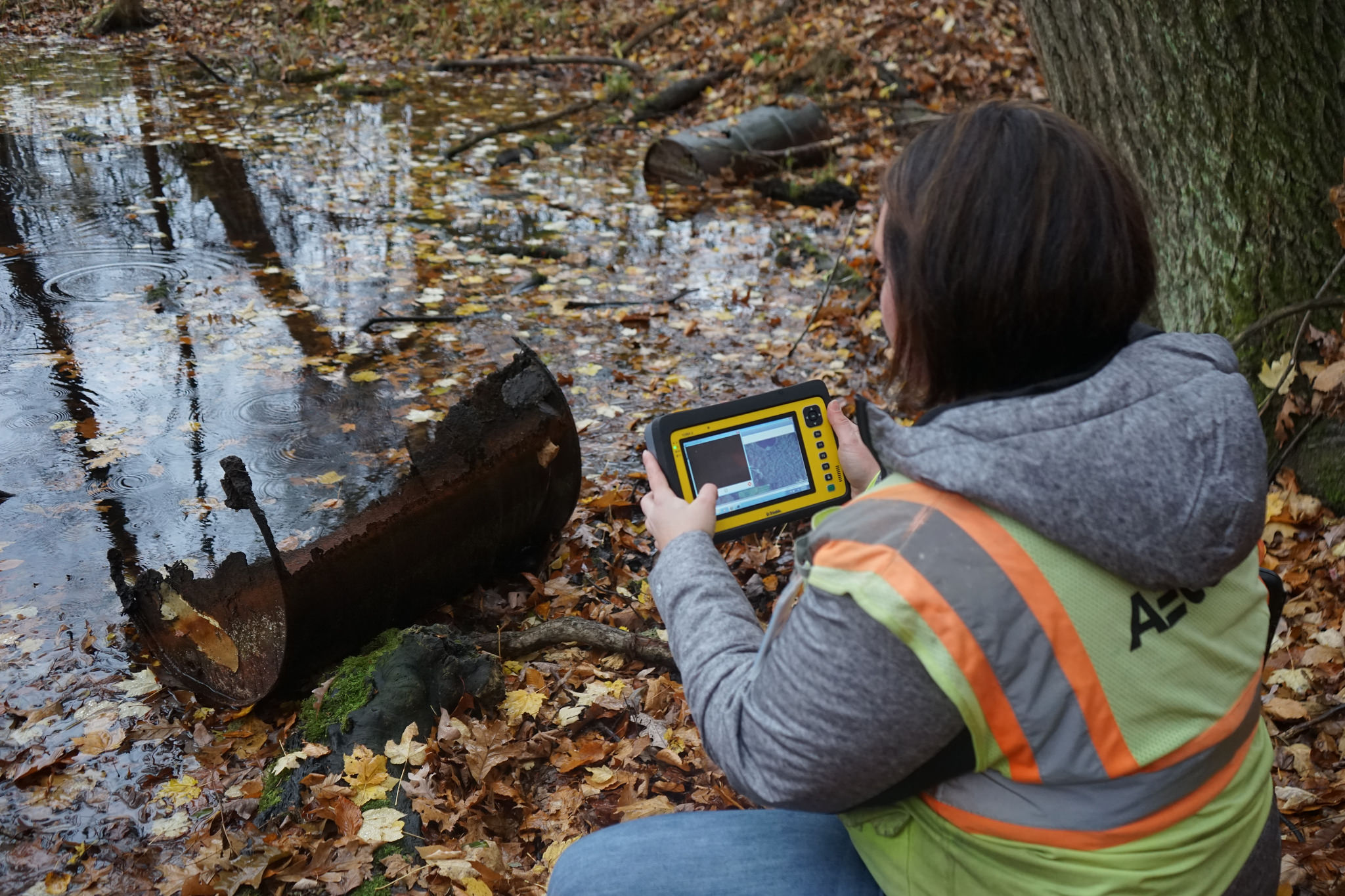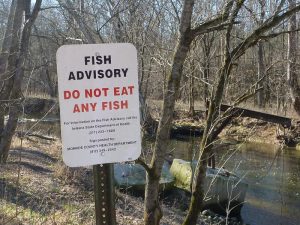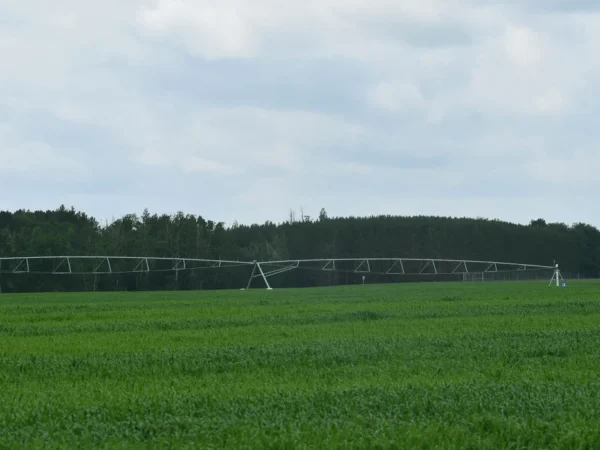
“Do Not Eat” advisory making Ohio fishing industry nervous
Last week’s greatlakesnow.org story about the “Do Not Eat” Fish advisory in Michigan’s Huron River being extended to all fish from Oakland County to the spot where the river enters Lake Erie in Wayne County has reached more than 11,500 views on Facebook as of Monday, Sept.10.

“Do Not Eat Fish” Advisory Sign, Photo by wikimedia
There is a lot of interest, not only because the fish has been declared unsafe to eat by Michigan’s Department of Public Health in a well-known river near Detroit due to the emerging contaminant called PFAS, which has been linked to testicular cancer, thyroid problems, developmental problems in children and high cholesterol, but because the Huron River flows into Lake Erie.
If Lake Erie’s fish became contaminated by PFAS, it would cause a devastating ripple effect not just on the fish, but on an industry that is all-important to Ohio and the entire Great Lakes Region.
Lake Erie is the shallowest of all the Great Lakes but has more consumable fish than all the other Great Lakes combined. Lake Erie’s fishery supports approximately 10,000 jobs per year and boosts the state’s economy by more than $1 billion each year.
Lake Erie is considered the Walleye Capital of the World and people come from all over the globe to fish in its waters.
Great Lakes Now contacted the Ohio Department of Public Health which deferred comments to the Ohio Environmental Protection Agency (EPA.)

Heidi Griesmer, Ohio EPA Deputy Director for Communications, photo by epa.ohio.gov
Here’s the statement we received from Ohio EPA spokesperson Heidi Griesmer: “Ohio EPA has a long history with protecting citizens from these compounds. In addition to sampling drinking water in areas surrounding our national guard facilities and working closely with Dayton and Wright-Patterson Air Force Base, we are in the early stages of developing a statewide, multi-divisional response strategy for PFAS contamination in Ohio, focusing initially on protection of drinking water. Recommendations on future sampling of fish tissue and fish tissue threshold values will be developed once the response strategy is released. We are reaching out to Michigan to determine what standards they are using on fish consumption as we are not aware of any national standards for these compounds.”
“No national standards.” That’s the problem, says Lake Erie Waterkeeper Executive Director Sandy Bihn.
Bihn tells Great Lakes Now, “When Toledo water users were told not to drink the water because of the presence of the algal based toxin microcystin, few realized that Toledo did so with no federal or state mandate to test for the microcystin and there were no federal standards. Toledo tested voluntarily, and based the ‘Do Not Drink’ water advisory on World Health Organization recommendations. Toledo recognized that the green slime could be a threat to treating drinking water, and took action to protect the health of its water users. In the 1990’s the US created cumbersome rules for drinking water standards – so much so that no new standards have been created since then. So the recent Michigan discovery of PFAS in drinking water and the scramble to determine standards is yet another example of the US ‘s drinking water standard negligence.”
Great Lakes Now talked with Captain Paul Pacholski, President of the Lake Erie Charter Boats Association. He says, “What we know so far: there are some fish in Lake Erie that use the Huron River as a spawning river. But it’s not a major concern, because it’s not a major tributary for spawning, like the Maumee, Detroit or Sandusky. So, the effects will probably be minimal.”

Lake Erie charter boat captain Paul Pacholski watching presentation, Photo by Gary Wilson
Pacholski says the biggest worry for him: people’s health. He says, “My major concern is that I run a tour boat. And I see a lot people fishing from shore. They often don’t have the ability to travel long distances. They like to sit on the shore and fish, get an easy chair with a bobber and just enjoy their day. They catch catfish, sheephead, and carp. I know they take those fish home and clean them and eat them. Now, I know with most fish advisories it takes a heavy consumption rate to cause health problems – it means eating the fish every day. But we have to do our due diligence to find out how toxic they are, and under what circumstances. We have to post things properly. Not everybody listens to the news, and many will not know there’s a fish advisory. I would want these things researched just as diligently as we can. “
Captain Pacholski agrees with Lake Erie Waterkeeper’s Sandy Bihn on the need for national standards. He says, “A lot of these toxins are so new that they really don’t even have standards for health. You have to have some sort of nationalized standards. If something is toxic in Ohio, but it’s not considered toxic in Michigan, somebody’s wrong! I’m going to go with the lowest number!”
Captain Pacholski says he’s hoping there will be some sort of action on PFAS on both the state and federal levels soon. He says, “It causes me concern. Raised eyebrows. This is new on the radar. We haven’t heard that much about these chemicals. We’ve got PCB’S and mercury on our list of concerns, but PFAS is still quite unknown. “
Featured Image: DEQ Contractor uses Yuma tablet to document potential PFAS contamination, Photo by DEQ via wikimedia cc 2.0
2 Comments
-
Are you aware of any surface water sampling programs or studies for the Great Lakes Basin or Lake Huron Hydrological Unit?
-
Questions , is lake Erie , Illinois. Open for boat fishing & fish consumption ? I am looking to fish there this – spring 2021 , or should I not make the travel ? Thank you , in advance. From : Mr. Williams 🐟 🎣




